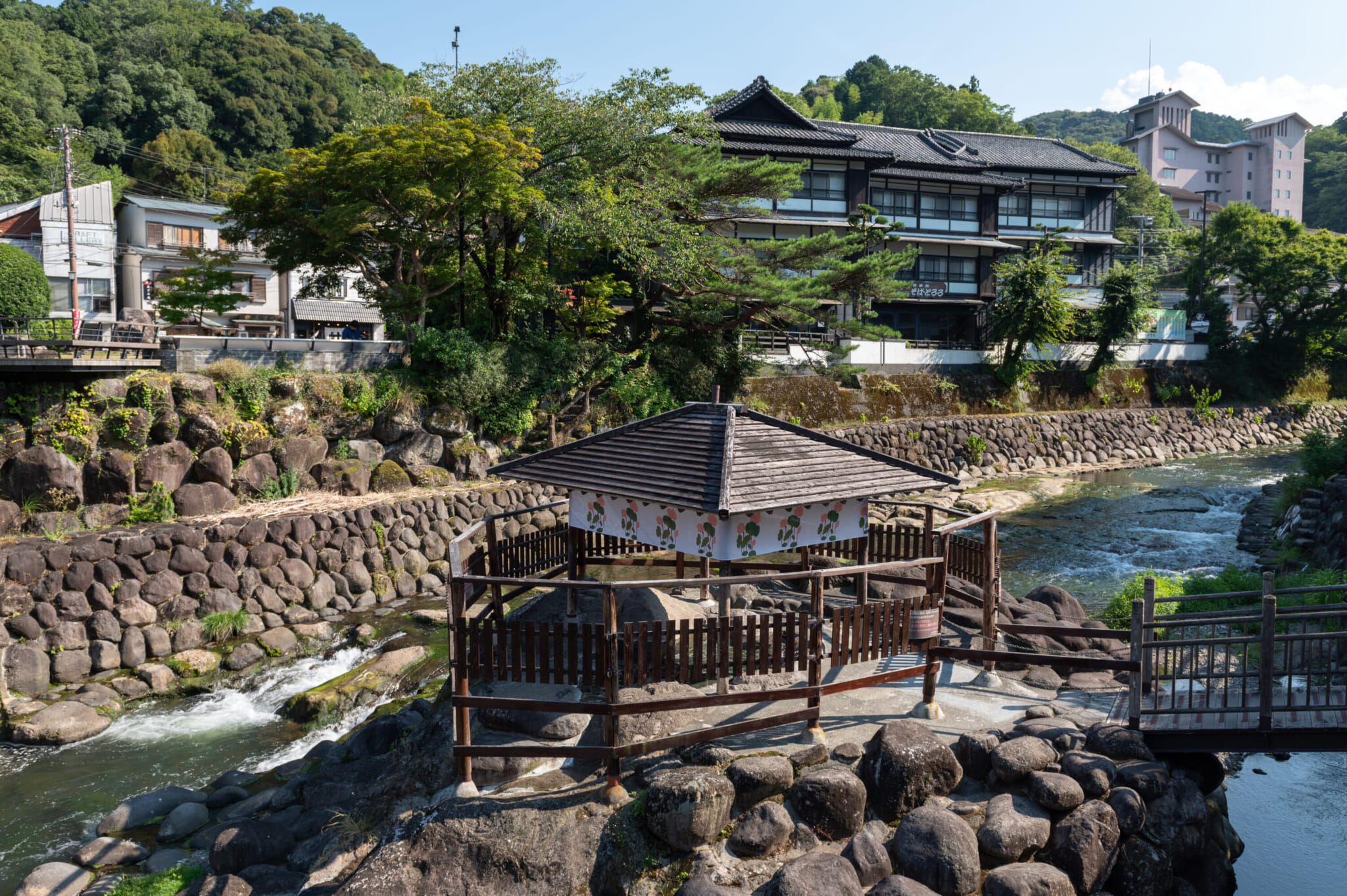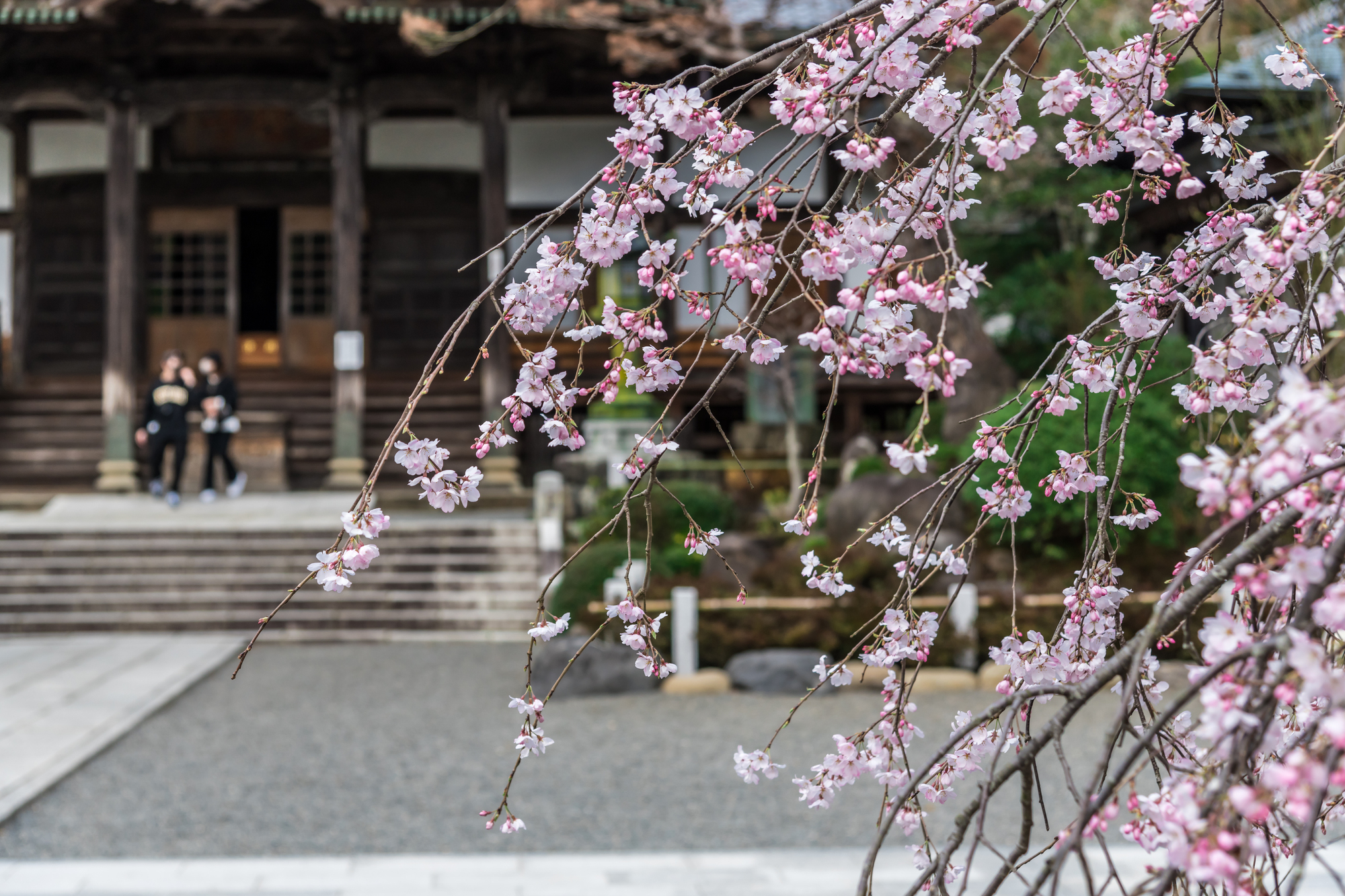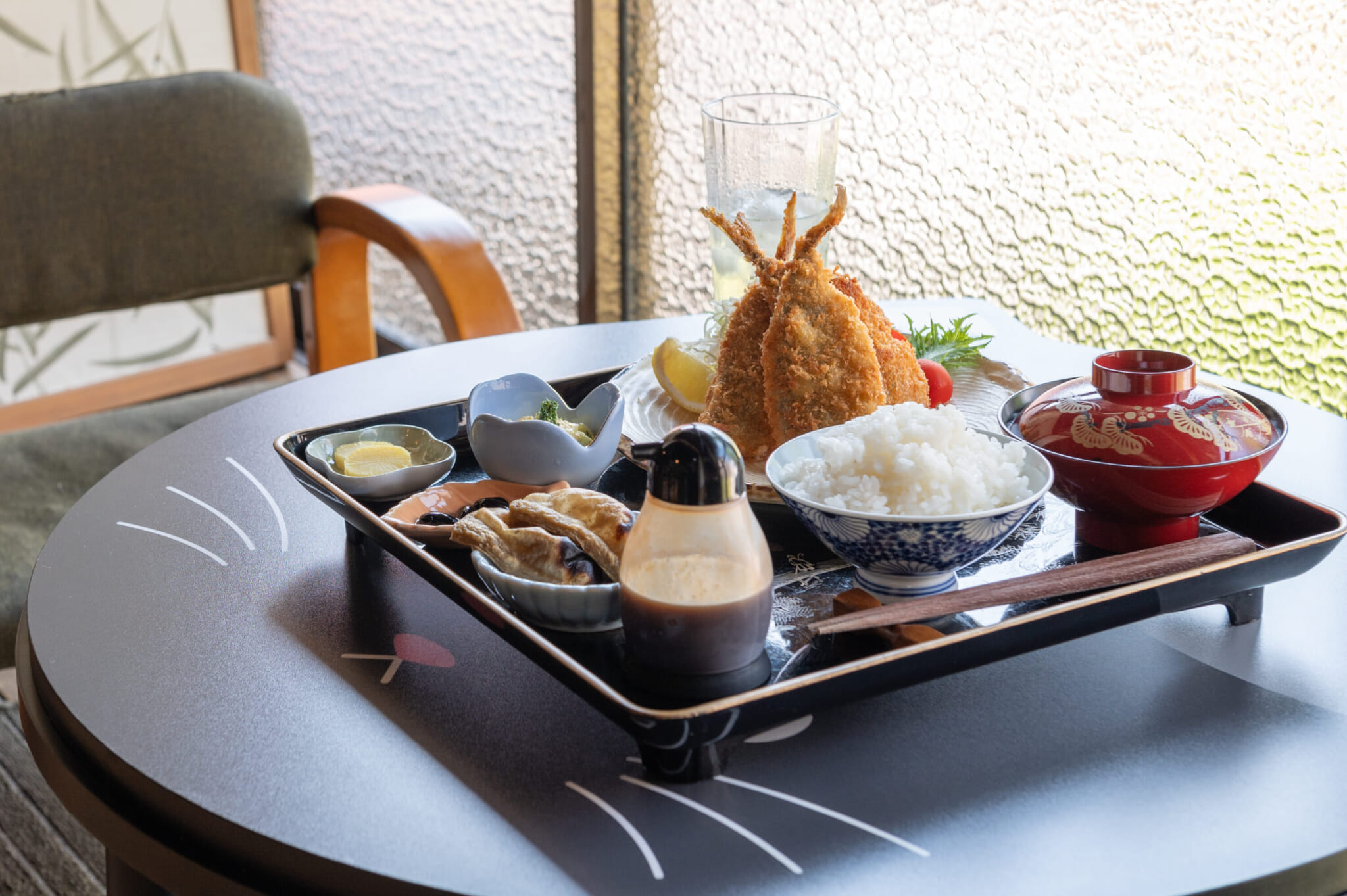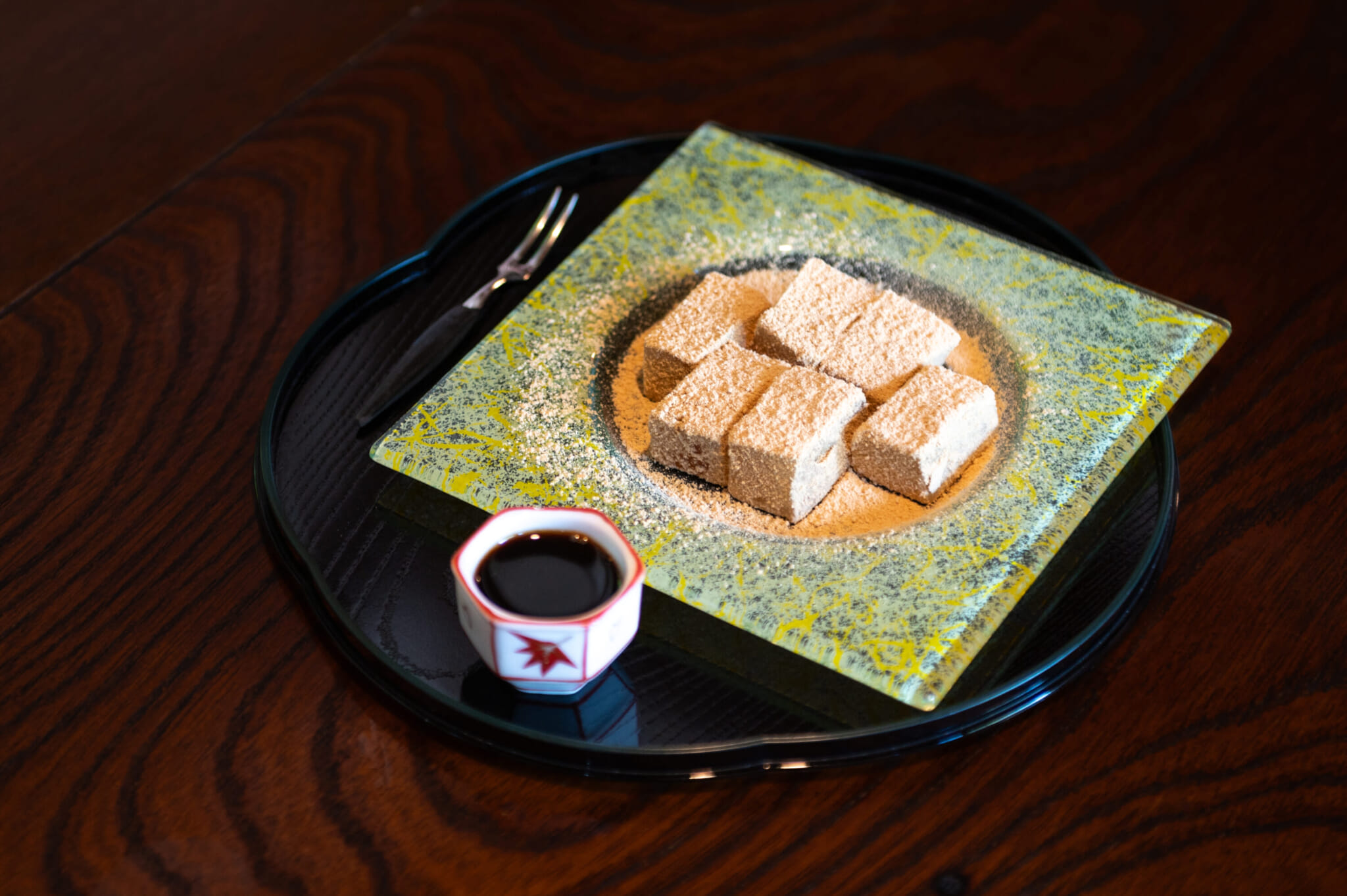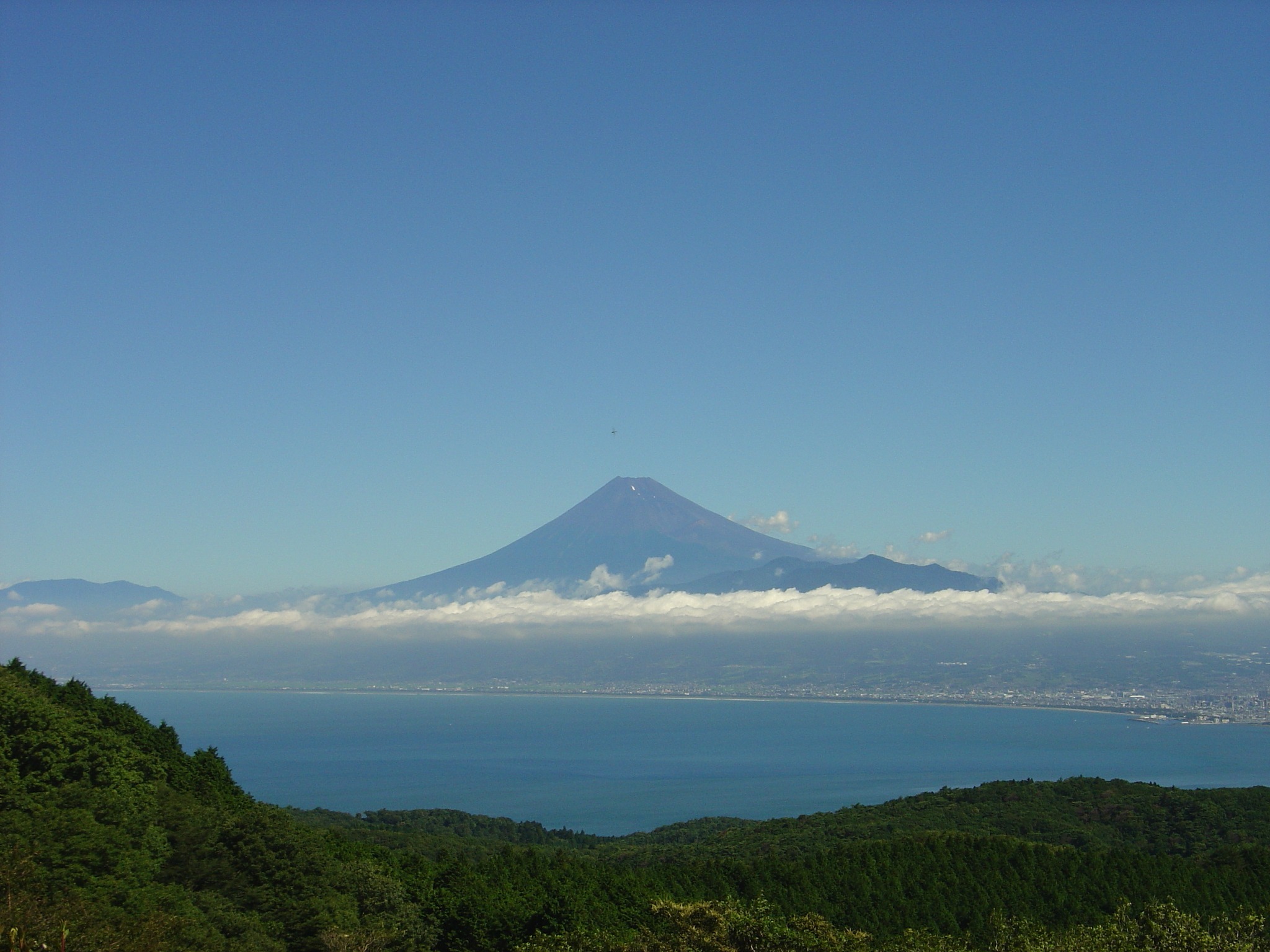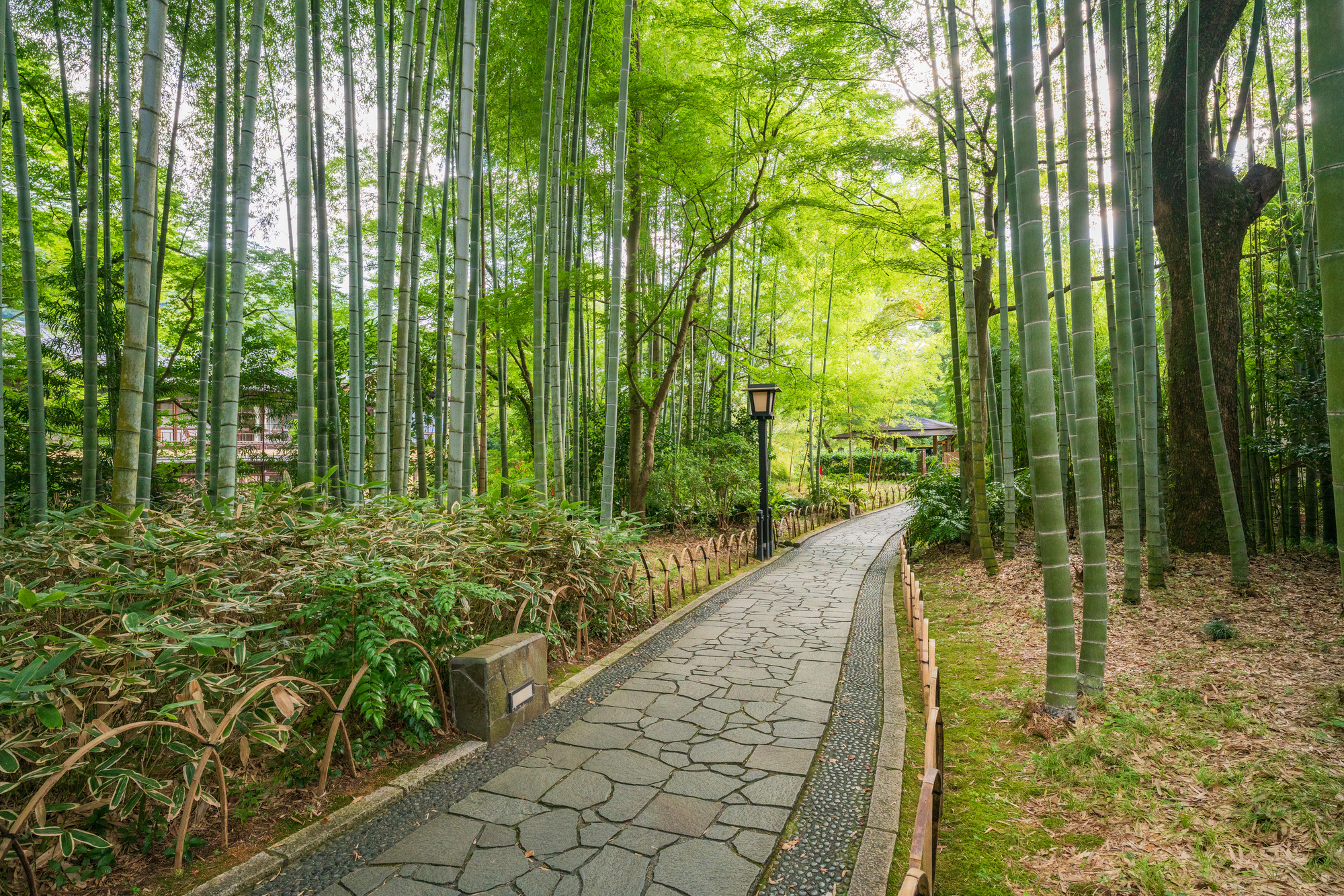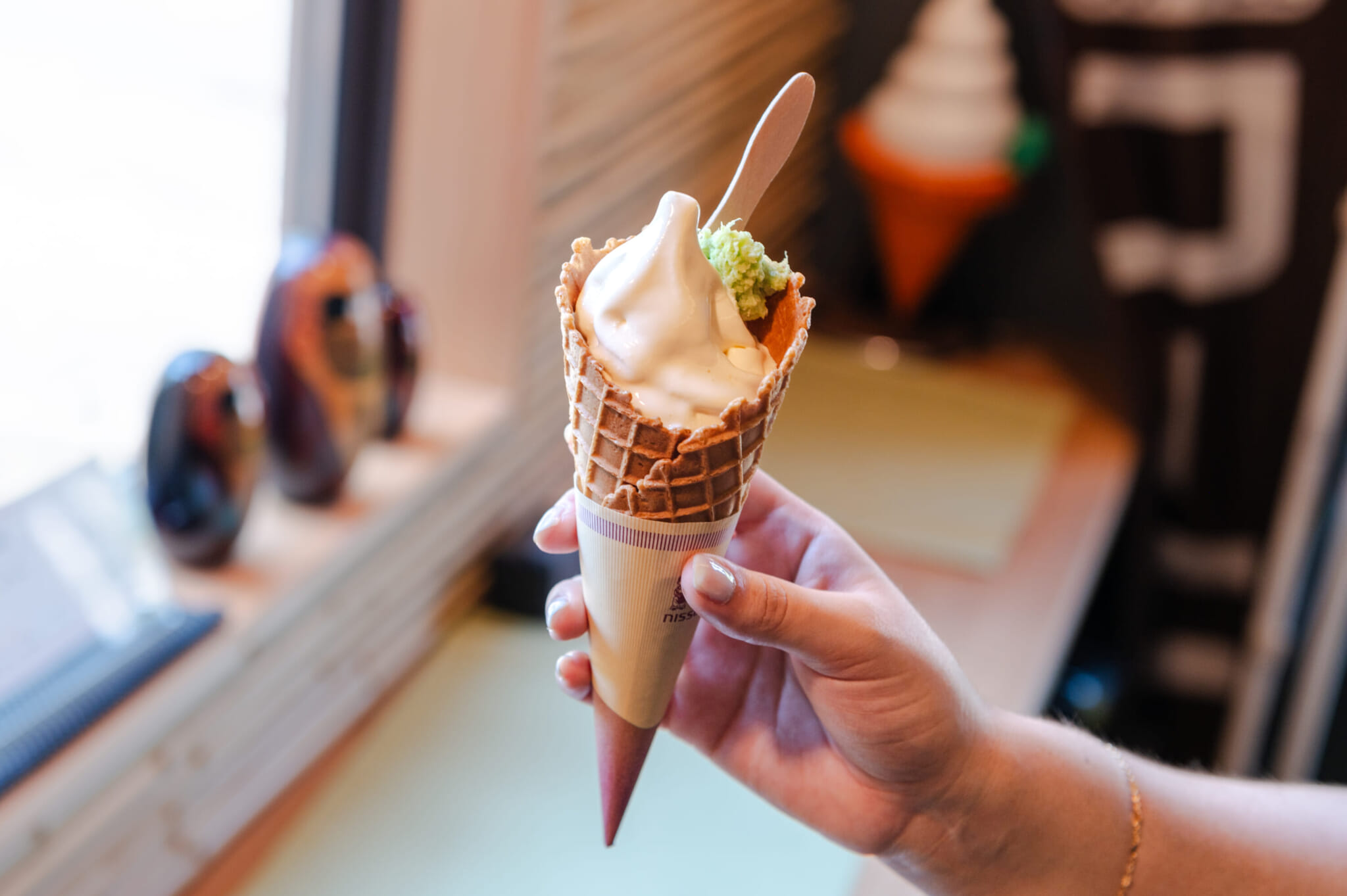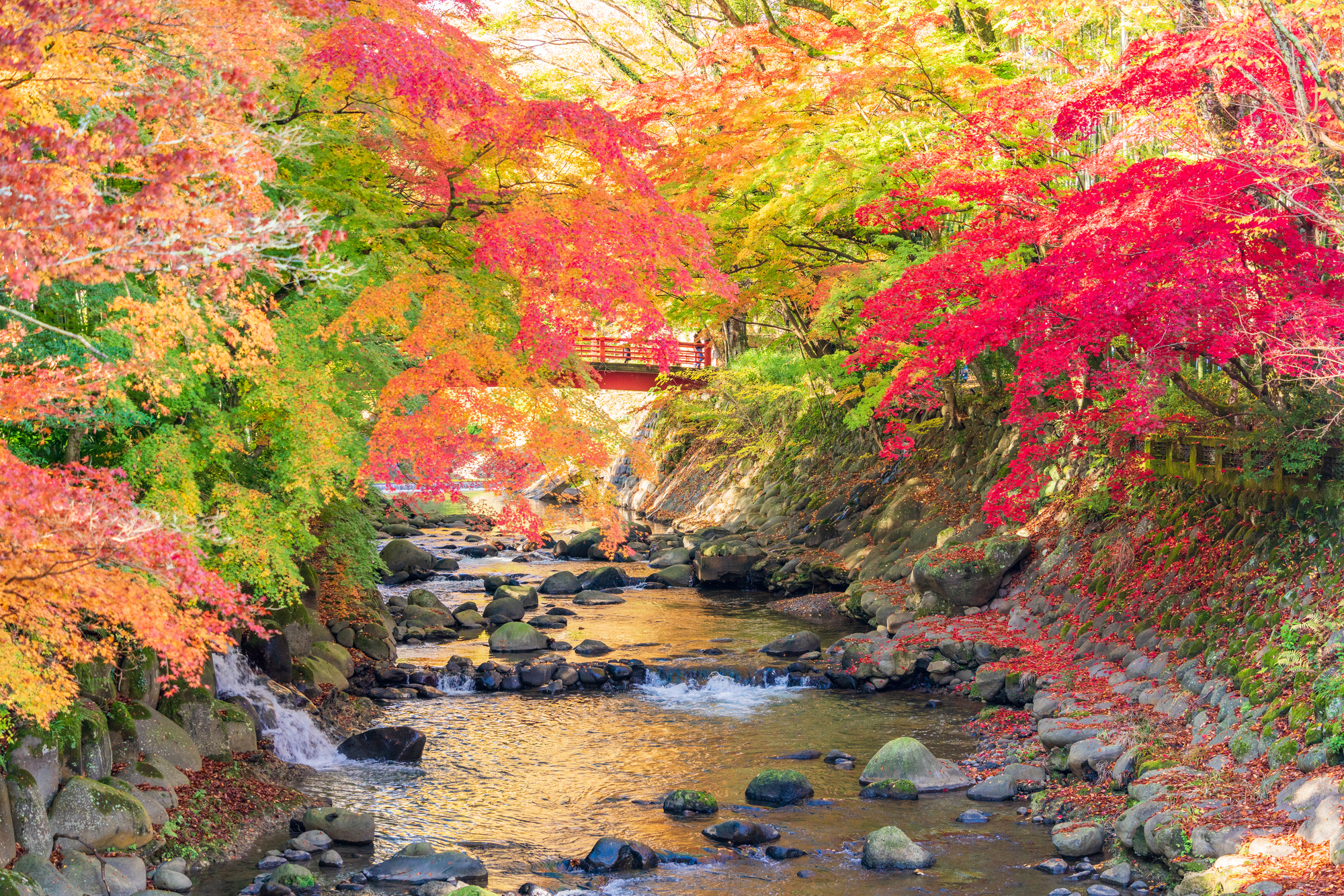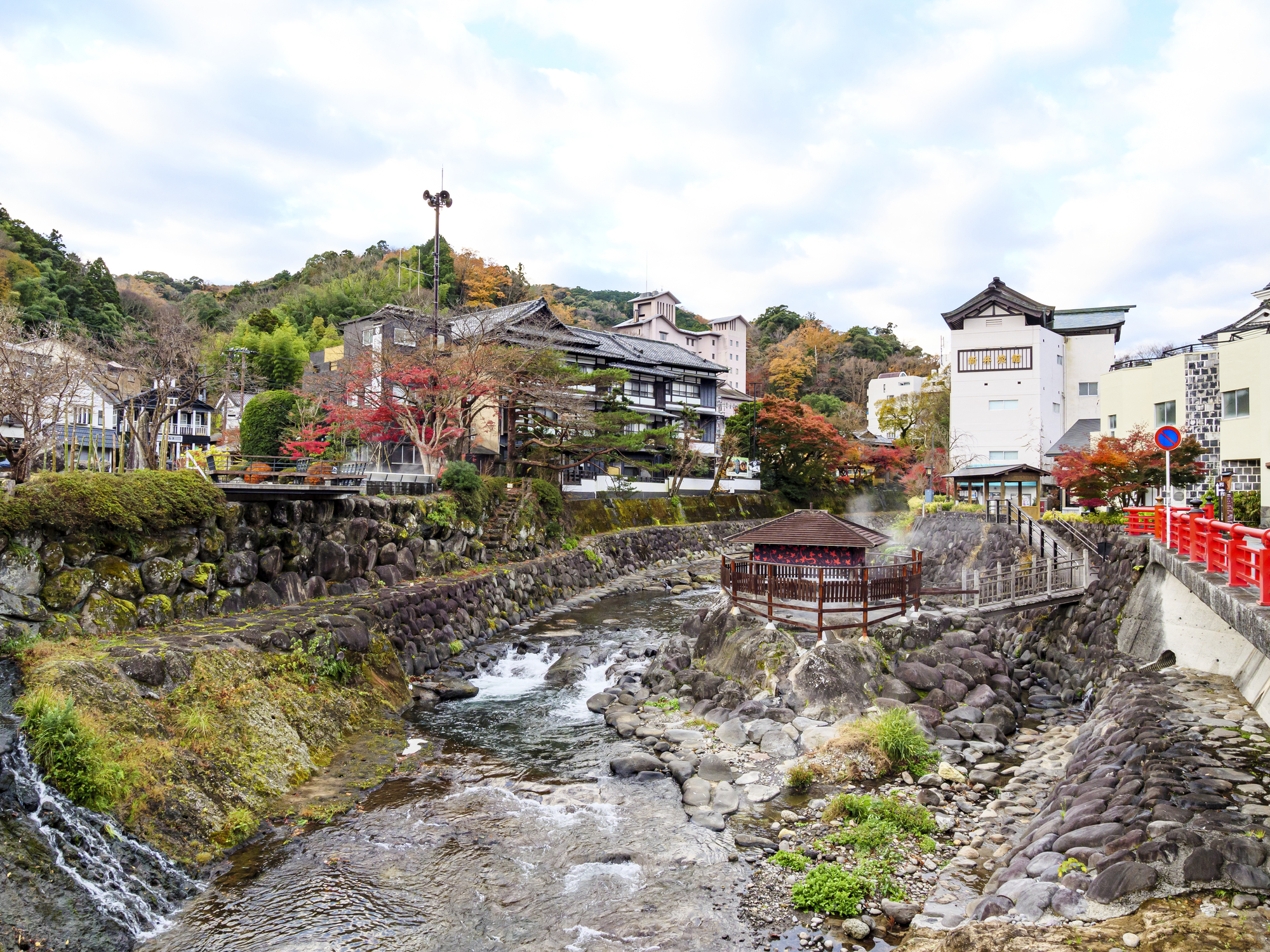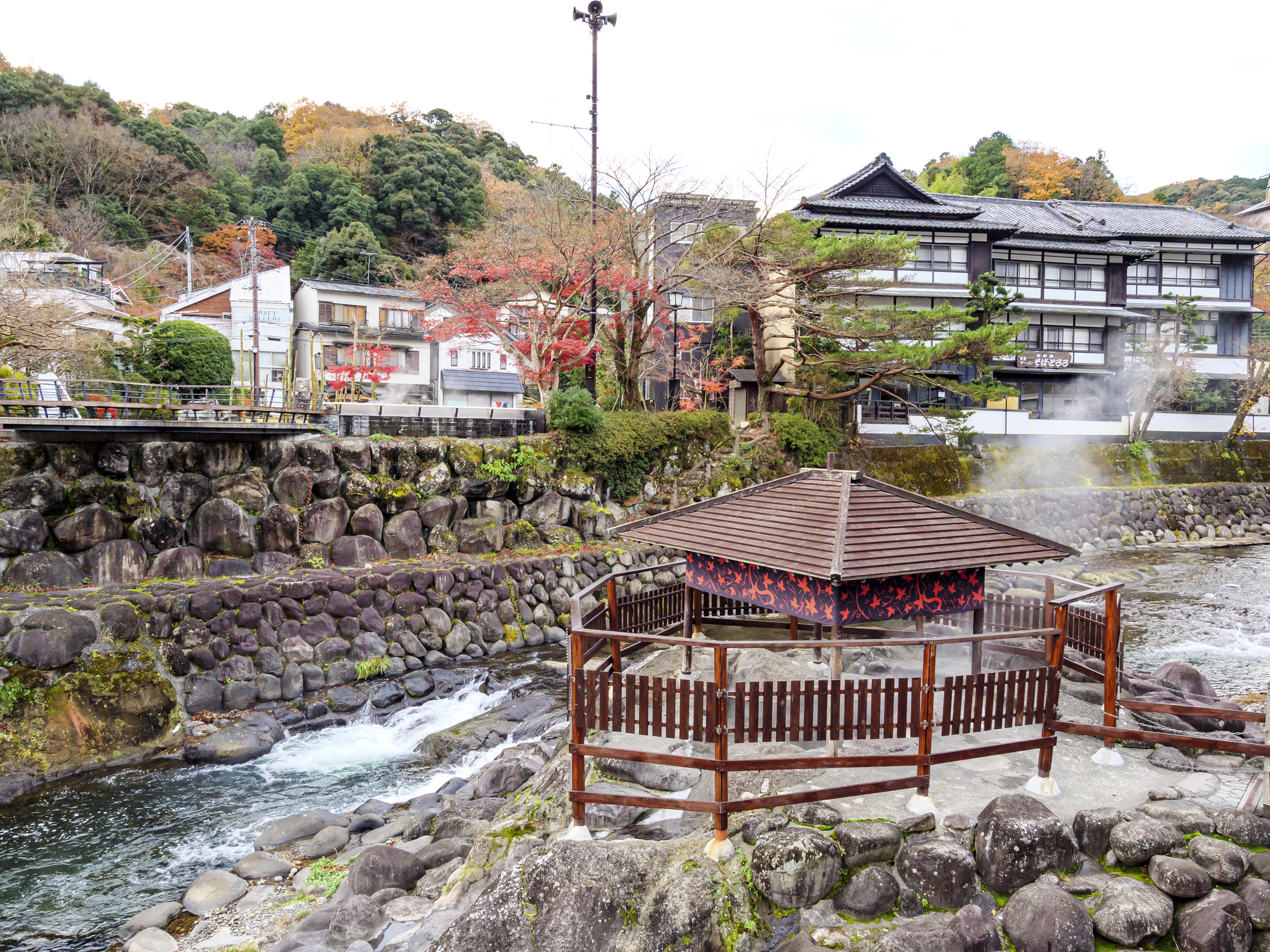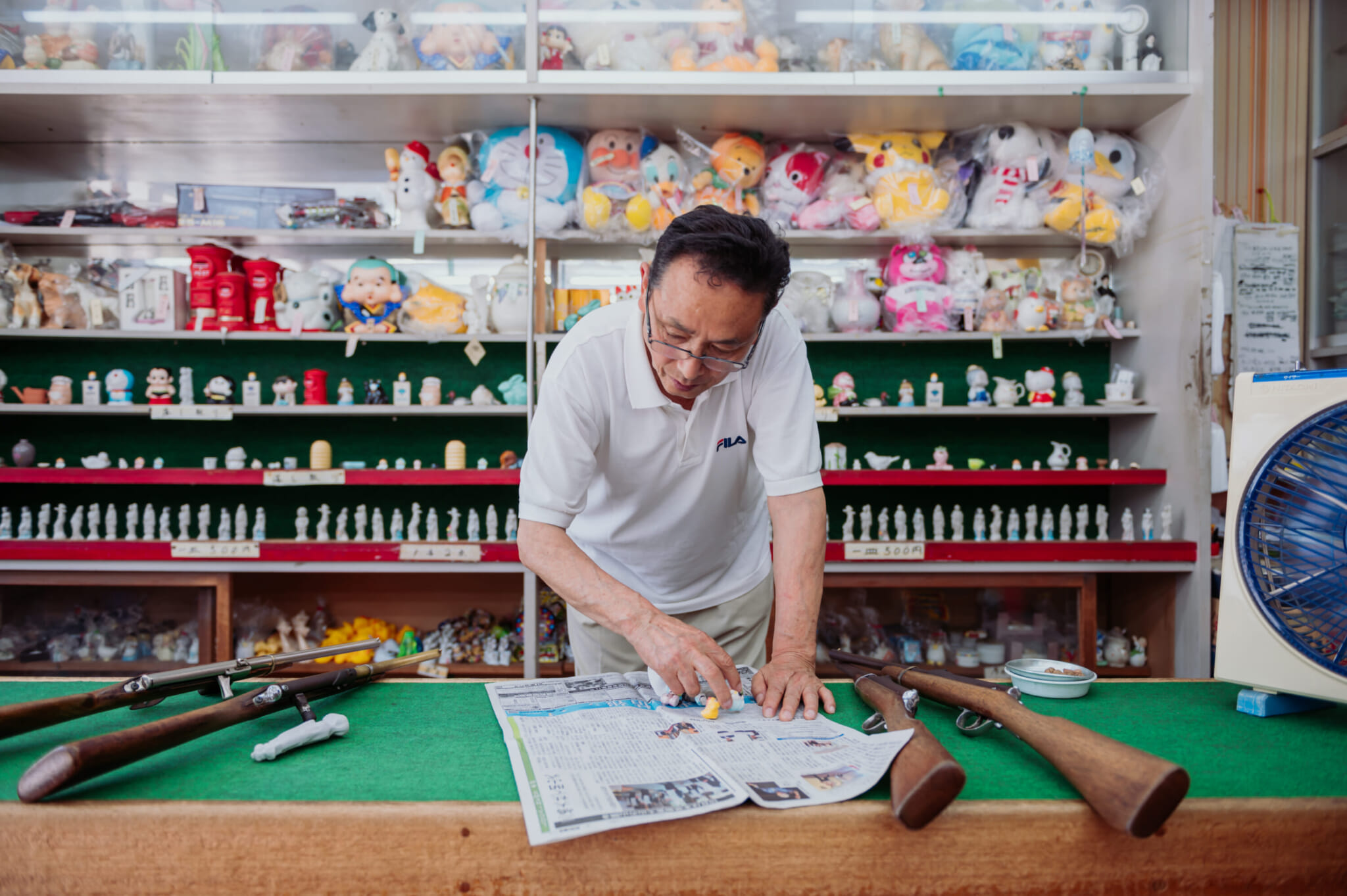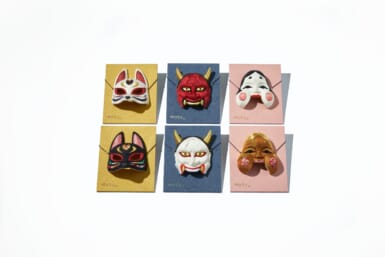At the heart of Izu Peninsula, Shuzenji Onsen is about a 90-minute train journey from Tokyo. Despite being easy to access, the hot spring hub is an often-overlooked destination. Yet, the quiet town offers a welcome retreat year-round. We especially recommend it for those who want to get away from the crowds and get closer to nature.
While a stay at one of Shuzenji Onsen’s 20-plus ryokan and accommodations is recommended, you can comfortably head out for a day trip — just be sure to catch the Shinkansen or Odoriko Limited Express from Tokyo Station by 9am to give yourself ample time to explore.
Spring: Cherry Blossoms and Local Delights
Shuzenji Onsen sees cherry trees blossom from early to late March, a couple of weeks earlier than most viewing spots in Tokyo. This Buddhist site was established in 807 and is the symbol of Shuzenji Onsen. There are several cherry trees on the grounds that bloom every spring, adding a pop of color to the calm scenery. Adjacent to the temple, you’ll find a small museum housing a variety of cultural treasures and artifacts.
For lunch, visit Amane, a quaint café operated out of a renovated kominka (traditional Japanese folk house) that offers delicious, homey meals with a view of the surrounding greenery. The menu features classic teishoku dishes made using locally sourced proteins and grains, as well as Japanese sweets for dessert.
For more breathtaking sights, head up to Darumayama Kogen Rest House, which sits on a plateau on Mount Daruma. From here, you have an unobstructed view of the Izu Peninsula and, on a clear day, Mount Fuji. While you can see Fuji year-round, winter and spring are your best bet for a chance to see Japan’s beloved icon.
If you travel to Shuzenji by train, you can take a bus to and from Darumayama Kogen from Shuzenji Station or downtown Shuzenji Onsen. As there are only a handful of buses every day, be sure to check the schedule.
Summer: Keep Cool and Carry On
Summer is the best time to sightsee and learn more about the history of Shuzenji Onsen. In addition to Shuzenji Temple and nearby Hie Shrine, Shigetsuden, located slightly uphill on the southern side of town, is another spiritual spot to add to your list. It’s believed to be the oldest wooden structure in Izu, and it was erected as a monument to Minamoto no Yoriie, the second shogun of the Kamakura Shogunate, by his mother, Hojo Masako. One of the main attractions of Shigetsuden is its 203-centimeter-high statue of a seated Buddha holding a lotus flower in its right hand.
Especially when the sun is at its peak, you’d be wise to stay in the shade. Shuzenji Onsen is home to a lovely bamboo forest path that follows the Katsura River, which flows through the town. At its midpoint, there is a large round bench to rest your feet. In the evenings, the path is lit up, creating an especially romantic atmosphere.
For refreshing eats, check out Daruma Chaya, a café just outside Shuzenji Temple. Though it only opened for business in March 2023, it’s grown popular with visitors thanks to its wasabi-topped soft serve ice cream. This wasabi is grown in the southeast of Izu city, which also happens to be one of the most important producers of the spicy condiment in Japan. It is said that Izu has been cultivating wasabi for approximately 400 years.
Fall: Life in Autumn Colors
Shuzenji Onsen sees a fair amount of autumn colors, which makes a fall trip a must if you love to surround yourself with and walk beneath red- and orange-leafed trees. The aforementioned Shuzenji Temple is a popular spot for fall foliage, but the streets parallel to the Katsura River at the center of town are perhaps the best places to see a wide range of colors.
Two bridges in particular are hot spots for fall foliage: the Katsura Bridge and the Kaede Bridge. Located at either end of the bamboo forest path, these bridges are recognizable by their bright red paint and traditional design. Along with three other bridges (all of which cross the Katsura River), the Katsura and Kaede bridges make up the so-called Bridges of Love. The legend goes that if you cross these five bridges with your partner while wishing for love and happiness, your relationship will blossom.
Winter: Work Hard, Relax Harder
During the cold season, Shuzenji Onsen is a great place to escape and treat yourself to a relaxing day or weekend. At the center of the Katsura River is Tokko no Yu. Though no one can enter this public onsen anymore, in the past, men and women in Shuzenji Onsen would come here to soak. This monument celebrated its 1,200th anniversary in 2007, and some say that it is the oldest onsen in Izu.
Nowadays, travelers and residents can instead soak their feet at one of two foot baths located on either side of the river. There are also many onsen around town, and some ryokan also accommodate day-trippers who are looking for a place to soak and unwind.
When not onsen hopping, stay warm and hang out at one of the classic arcades. Located just down the road from Amane, Leisure Center Yanagawa, a retro entertainment hub that opened in 1961, lets you test your shooting skills and luck. The shooting game alone is well worth a stop. Hand over ¥500 to get ten chances to hit the figurines and dolls on the wall. Exchange your winnings for a prize or keep them to take home. Cash is needed to play, so be sure to have some on hand.
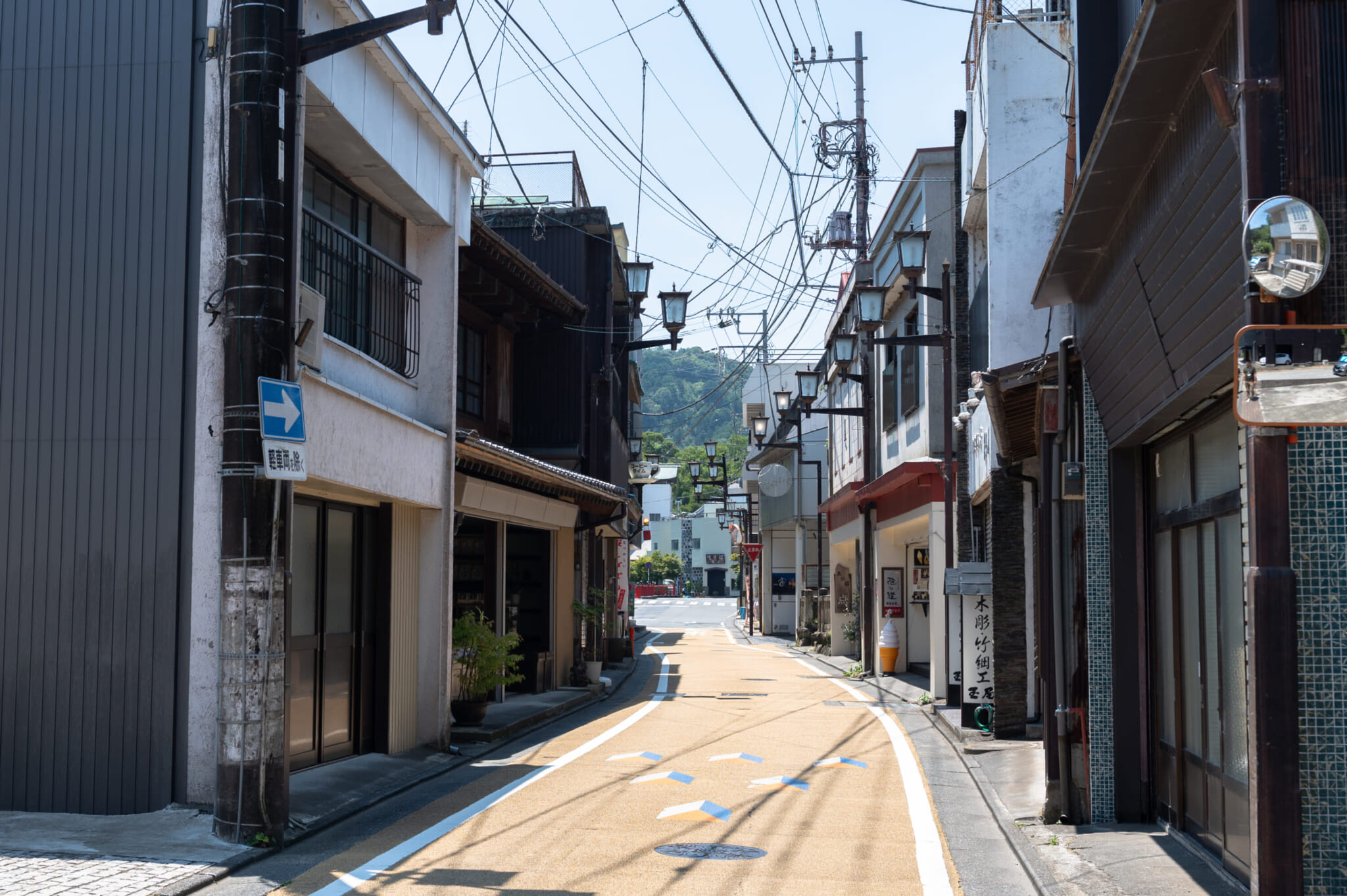
Shuzenji Onsen | Photo by Lisa Knight
Supplement Your Trip to Shuzenji Onsen
Shuzenji Onsen offers a plethora of information throughout the town in English, traditional and simplified Chinese, and Korean. English speakers can also take advantage of the Otomotabi service, which provides audio guidance for most of Shuzenji Onsen’s attractions and sightseeing locations.
More Izu City Travel Inspiration
For more travel information and inspiration on Izu city, check out our previous articles:

